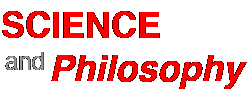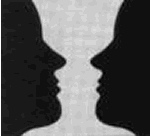Reading on: Complementarity
Matson, Floyd W. The Broken Image, George Braziler, New York 1964 [abridged— 1000 words] — Complementarity: the tolerance of ambiguity
Heisenberg’s uncertainty relations demonstrated the impossibility of simultaneously measuring the position and velocity of an atomic particle—although either one could at a given moment be described with precision.
This paradoxical situation found a curious parallel, during the early phase of the quantum revolution, in the inability of physicists to choose between or reconcile the two prevailing theories of the ultimate nature of matter: those of the “wave” and the “particle.” The somewhat older particle (or corpuscular) theory served well to explain a wide range of phenomena, but broke down in the face of further tests. The wave theory, on the other hand, while it accounted perfectly for facts resistant to the particle explanation, failed to make sense of those which the older theory had accommodated. In short, both formulations persisted in remaining valid for some observations, but invalid for others; each failed where the other was successful.
It was Niels Bohr who furnished the solution to this crisis through his principle of complementarity, which made it possible to accept both theories as valid—not simultaneously but in alternation. The two concepts of waves and particles were said to be “complementary, meaning that both were required for a complete explanation but that they were mutually exclusive if applied at the same time. In effect the two pictures of reality could not exist simultaneously; they could never conflict with one another because they could never meet. “They are like the two faces of an object that never can be seen at the same time but which must be visualized in turn, however, in order to describe the object completely.”
Another, and perhaps more nearly literal, application of complementarity is to be seen in the mutually exclusive character of the measurements of position and velocity of atomic particles, in this case the measurements themselves are regarded as complementary.
Whichever example is used, the point of Bohr’s principle is its recognition that either of the alternatives is partial and inadequate by itself; that, in fact, it represents an “idealization” which is essentially artificial until supplemented by the other of the two factors. A striking illustration of this point has been cited by de Broglie in the relationship of an individual physical unit, such as an electron, with the system in which it has its being. To seek to describe the individual entity with exactness is, so to speak, to sever it from its world; but this forcible isolation cannot be accomplished without a “mutilation of the individuality” of the unit; for the system in quantum physics “is a kind of organism, within whose unity the elementary constituent units are almost reabsorbed.”
The dilemma which this poses for the investigator, and the conceptual compromise it necessitates, reveal the new and unaccustomed tolerance of ambiguity that characterizes the perspective of quantum physics: “The particle cannot be observed so long as it forms part of the system, and the system is impaired once the particle has been identified.” These ideal conceptions of unit and system, de Broglie points out, are indeed related to “reality” and useful for describing it, but only on condition that we do not pry too closely; for “if we insist on perfectly exact definitions and, at the same moment, on a completely detailed study of the phenomena, we find that these two notions are idealizations, the probability of whose physical realization is nil.”
Bohr’s principle of complementarity has been described by one of his colleagues as the culmination of the modem philosophy of science, and by another as the clue which unravels the entire domain of atomic experience. As these high tributes suggest, the concept has had reverberations far beyond its original reference to the problem of quantum uncertainty. Thus, among other things, a general theory of predictions for physical systems has been constructed around it, which contrasts complementarity with the causality principle of classical physics in terms of the difference between “subjective” and “objective” theories. A variety of implications for logic and epistemology have also emerged, among which is the construction of a multi-valued “logic of complementarity” departing sharply from the conventions of Aristotelian tradition.
Of more immediate significance for the sciences of man, however, are certain still broader intimations first drawn by Bohr and subsequently elaborated by various of his coworkers. From the outset, the principle was recognized as one of potential humanistic reference. “The fact that in an exact science like physics,” wrote Max Born, “there are mutually exclusive and complementary situations which cannot be described by the same concepts, but need two kinds of expression, must have an influence, and I think a welcome influence, on other fields of human activity and thought.”
Inspired largely by this premonition, a substantial body of physical scientists have once again turned their attention to the possibilities of extrapolation—or, more modestly, of analogy—from their “exact” inorganic science to the more complex and confused sciences of life and man…
The application of Bohr’s principle to the study of man directly expresses this awareness by modern physicists of the partial and restricted character of their method. For the crucial meaning of complementarity in the context of human affairs—the “immense evocative analogy” it points to—is that of the mutually antagonistic but peculiarly cognate relationship between the traditional scientific method of “causes and mechanisms” and the traditional humanistic method of purposes and reasons—the method known to social science as verstehen. It is not denied that the subject matter of biology and psychology can be submitted to rigorous investigation in physicochemical terms; what is in question is the adequacy and fruitfulness, even the propriety, of such mechanical analysis.
This pervasive sense of limitation with regard to the causal reduction of living systems is illuminated by the observation of Bohr that before such objective probing can be carried quite far enough to tell us exactly what we wish to know, the life which we have under observation is likely to have expired.


